Finnish fermented lemonade (or Sima) is a traditional carbonated beverage made for Vappu celebrations on the first of May. It’s a delicious lemon-y soda that’s been made for generations, and it’s easy to make at home with just a few simple ingredients.
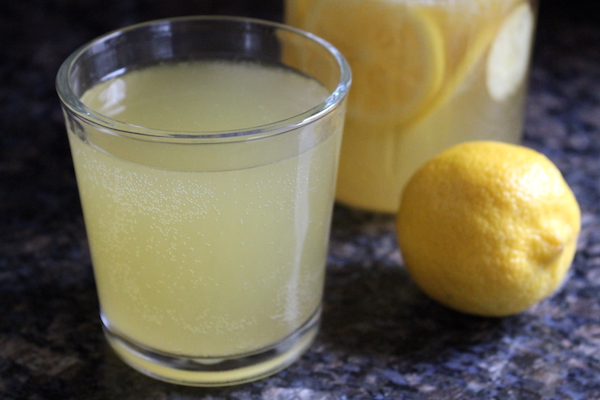
The tradition of mead or honey wine goes back millennia in Nordic countries, and it’s no surprise that countless variations have developed over the years. Sima is a quick fermented lemon soda, that’s technically a mead at heart. It’s only fermented ever so slightly, just enough to make it a bubbly effervescent lemonade suitable for heavy drinking on a hot spring day, or sharing with young ones.
Sima is a traditional drink for Vappu, or Finnish May Day. It’s passed around in huge festivals as everyone emerges from their winter hibernation to enjoy spring in the north country. Up here in Vermont, real spring starts about the same time as Finland, in early May. This year, we’re celebrating with cold glasses of Sima.
This winter I’ve been reconnecting with my Nordic heritage by reading through The Nordic Cookbook. My grandmother and her clan of fiery red-headed Norwegians left behind most of their food traditions and assimilated quickly to this country long before I was born. As a child, I remember that my grandmother’s holiday baking was always extravagant, and only now I’m learning that it was part of the Nordic tradition, and creating a large supply of Nordic Christmas Cookies for the table helped represent abundance.
Beyond the Christmas cookies, there wasn’t much nordic living in my upbringing, and I feel like I have a lot of catching up to do. I found some really exotic wild foraged Nordic recipes, like this one for traditional pine bark bread, which has kept things interesting in my kitchen of late.
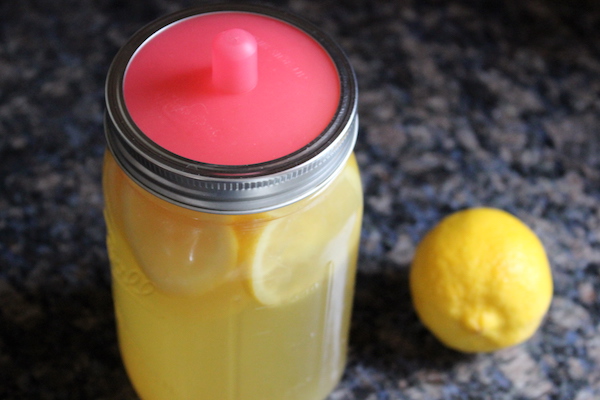
I love how The Nordic Cookbook puts everything in context and describes the traditions surrounding each recipe. Here’s what it has to say about Sima:
“This beverage, which has its origin somewhere in the mead family of drinks and which was, in the past, made from honey, is today most often made from white and/or brown sugar and water. Sima is flavored with lemon and is drunk before all the sugar has been consumed by the yeast cells and turned into alcohol. It should be fresh and fruity tasting, with a light sparkle. It is predominantly drunk on Vappu, the Finnish May Day, and is often served alongside traditional Finnish May Day funnel cakes…”
The recipe listed is conveniently designed for a one-quart batch, which is perfect for making in a quart mason jar with a silicone water lock.
While the original recipe listed called for just the juice and zest of one lemon, I sliced the lemon thin and put the whole thing into the fermenter. I also chose to use all honey, going back to the drink’s old-school roots in mead. I added the lemon and honey to a quart mason jar, and then poured boiling water over everything to dissolve the honey and help extract the flavor from the lemons.
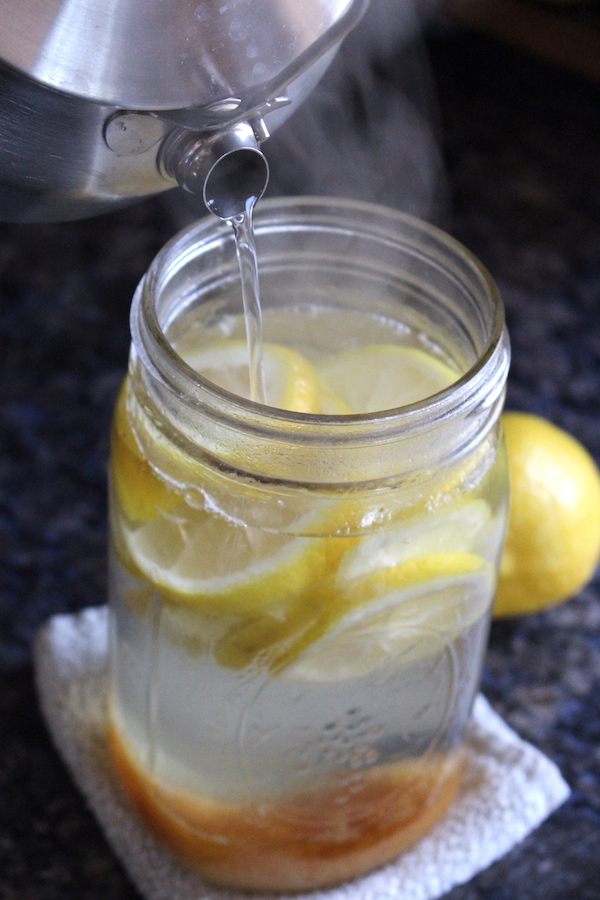
The other interesting inclusion in the traditional recipe is five raisins. Modern mead recipes often include a few raisins to help provide nutrients for the yeast. These raisins definitely do that, but they also have another purpose.
According to The Nordic Cookbook, “The slightly odd-looking addition of 5 raisins is actually very clever. They will ferment alongside the brew itself and puff up like little balloons with CO2. When they float up to the surface, the sima is ready to drink.”
The raisins actually act like a little biological turkey timer, popping up when sufficient CO2 is present in the fermented lemonade to create a pleasant level of fizz (but not too much alcohol). Most meads are fermented for several months at least, if not longer, but this quick ferment lasts only a week.
The goal is carbonation, not alcohol, and the resulting fizzy lemon drink was consumed by everyone, including young children.

The raisins float when the drink is fully carbonated.
I read one estimate that the finished beverage has around 0.05 to 0.15% alcohol or similar levels to Kombucha. How true that is, I couldn’t say, but you definitely don’t taste the tiny bit of alcohol in sima. It’s quite sweet, with a bit of fizziness that’s really pleasant.
The flavor is a bit different than a standard lemonade, but I think that’s because of the addition of lemon zest or peel into the batch.
It tastes much more lemon-y than any lemonade I’ve ever tasted, and you can smell it well before you taste it. It’s the lemon oil from the peel, and it has an intense lemon scent that comes through as a flavor too.
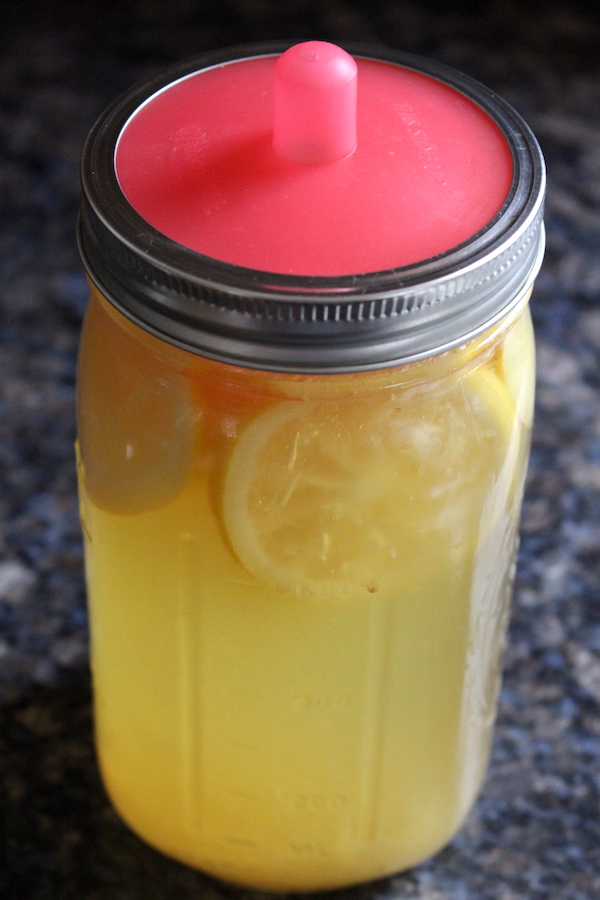
Generally, I stress the importance of using brewing yeast for any type of ferment, as opposed to standard bread-baking yeast. In a long ferment, the yeast actually contributes quite a bit of flavor to the final brew. Cider yeast strains will bring out the best in apples, and there are specific yeast strains for just about every type of beer.
This drink is fermenting for such a short time that it really doesn’t matter. Use a pinch of wine yeast if you have it, but otherwise, just any dried yeast will do.
I happened to be right in the middle of brewing several batches of wine, and I already had pitched the yeast into parsnip wine and lemon wine. I saved a small amount of my go-to wine yeast (premier blanc) for this ferment.
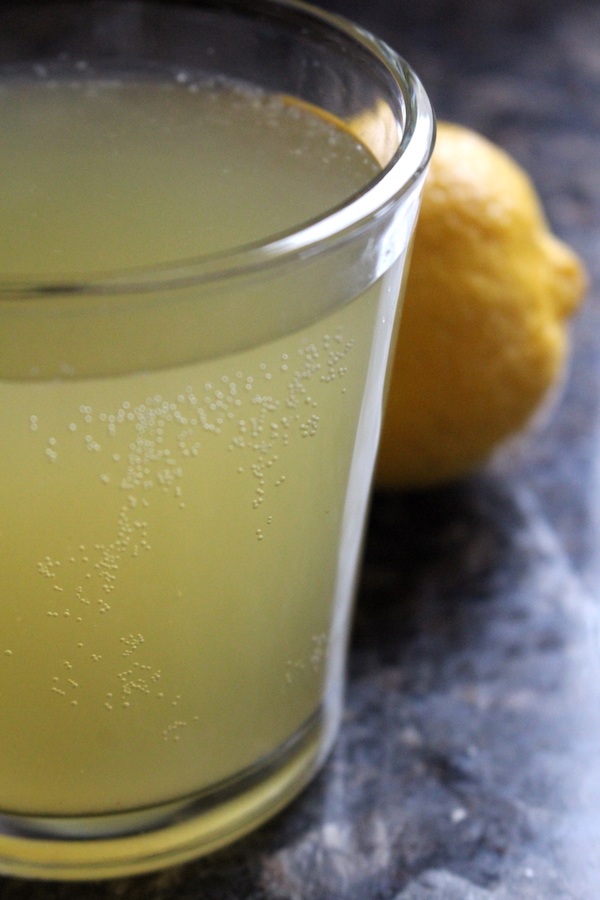
Allow the mixture to ferment at room temperature for about 24 hours until the raisins puff up and begin to float.
Mine only took about 18 hours to float to the top, but I pitched it pretty aggressively with wine yeast since I had plenty left over. Either way, once the rains float, filter out the lemons and raisins and bottle the drink in either flip-top Grolsch bottles or another mason jar.
Seal up the lid tightly and store it in the fridge for another 2-4 days until it’s fully carbonated. The tight lid will trap the bubbles and allow for a carbonated lemonade, but you can’t leave it too long.
Be sure to drink it within seven days for the best results.
Finnish Recipes
Want to stick with Finnish Recipes? Read on…
- Finnish Oven Pancake (Ålandspannkaka)
- Finnish Teaspoon Cookies (Lusikkaleivät)
- Finnish Salmon Soup (Lohikeitto)
Sima ~ Finnish Fermented Lemonade

This light, bubbly, naturally carbonated lemonade is traditionally consumed for in Finland on the 1st of May.
Ingredients
- 1/2 cup honey (or brown sugar)
- juice and grated zest of 1 lemon (or a thinly sliced whole lemon)
- 5 raisins
- 1 tiny pinch yeast (ideally wine yeast, but bread yeast will do)
- water to fill
Instructions
- Place the sugar, raisins and lemon slices (or juice and zest) in a quart mason jar. Pour near boiling water over the top to fill the jar to within 1 inch of the top. Stir to dissolve the sugar or honey.
- Allow the mixture to cool to room temperature, and then add a pinch of yeast. Stir to incorporate.
- Seal the jar with a mason jar airlock (or cover loosely with a cloth if you don't have an air lock). Allow the mixture to ferment at room temperature for 24 to 48 hours, until the raisins float to the top.
- Once the raisins float, pour the sima through a fine mesh strainer and bottle in flip-top Grolsch bottles or another mason jar. Seal the lids tightly and store in the refrigerator.
- Allow the drink to age in the refrigerator sealed for 2-4 days to accumulate carbonation. The tight seal is what allows the drink to carbonate. If you find it's not carbonating in the refrigerator, leave it out on the counter for a few hours to carbonate (but watch the time there, leaving it out too long will cause too much pressure to build up, and it may break the container).
- Keep the drink stored in the refrigerator to slow fermentation until you're ready to drink. Open it when you're ready to consume, but be sure to drink within seven days for best results.
Fermented Drinks
Looking for other tasty, naturally fermented drinks?
Scandinavian Recipes
I have plenty of recipes to keep your scandi kitchen cooking!
- Swedish Cinnamon Cookies (Kanelkakor)
- Drømmer Cookies (Norwegian Browned Butter Cookies)
- Swedish Banana Bread (Banankaka)
- Danish Raspberry Bars (Hindbærsnitter)
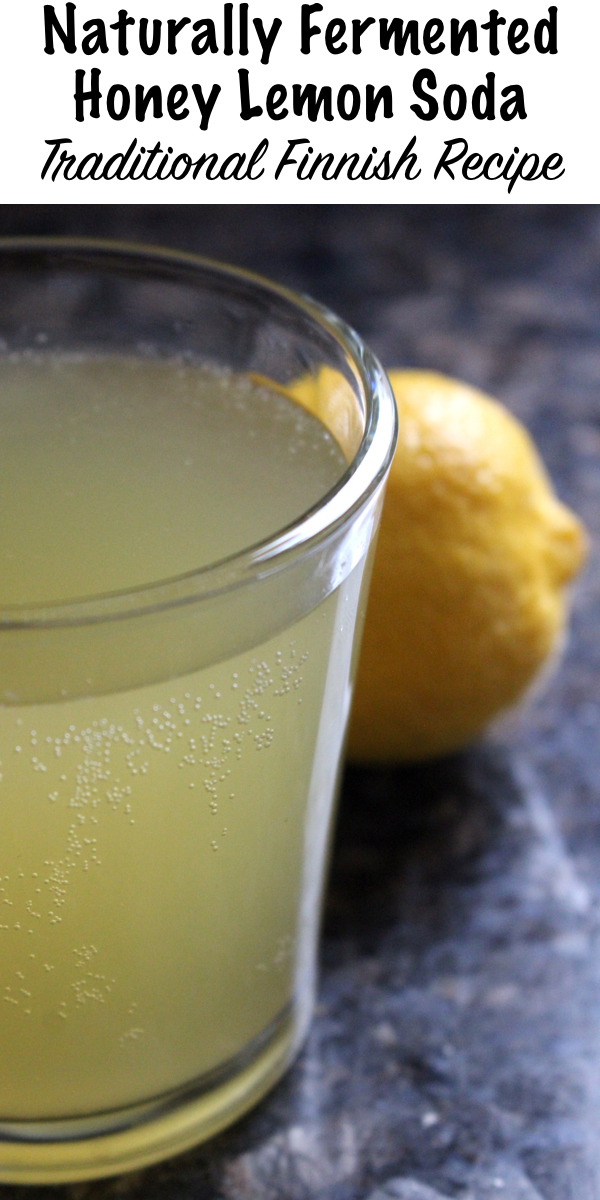
Jean Harrison
What is the red lid on the quart jar? It appears to be silicone,maybe,with a nipple in the center. I am excited to stumble onto your site! I want to make everything!!
Ashley Adamant
Good question! That’s a silicone fermentation lid from mason tops. It’s a one-way valve that lets the air out but not in. They’re used to make sauerkraut and homemade wine usually.
MamaVic
I wonder if other fruit such as berries or apples with added juice could be used in this recipe? I am going to try this recipe out! I have an autoimmune disease and my immune system goes into overdrive every so often and decides to attack my liver, so I have to be careful to avoid anything that is strong in alcohol, but things that are fine for The Children’s Table are perfect for me. I am really excited to be able to try this and share it with my family and friends.
Admin
Hi there. Yes, you can ferment all kinds of fruit in the same way and make some pretty delicious fermented drinks.
Michael Falkland
Hey!
I just want to know how much a tiny pinch of yeast is? 🤔
Ashley Adamant
Less than a gram. Literally, take just a few of those tiny “grains” of yeast that come in the dried packages you keep in the fridge. When you’re making wine, 1 gram of wine yeast is the amount you use for a gallon, so this recipe uses less than my kitchen scale can measure…
Nichelle
I was wondering if we could follow these steps, but substitute strawberries (other fruits) instead of lemons? I have a bunch of rhubarb and strawberries I’d like to try, but don’t want to waste it! Thoughts? 🙂
Ashley Adamant
Yes! It’d work the same, but I’d suggest adding a tiny bit of lemon juice for acidity. It’d basically be a yeast carbonated soda, just like this one, but different flavor. If you really want to get fermenting with the strawberries or rhubarb, you can try strawberry wine or rhubarb wine.
Charlene
Can I use nutritional yeast for the lemonade?
Ashley Adamant
I do not believe so. I think nutritional yeast is dead yeast cells, so it wouldn’t ferment. I think it’s also preserved with salt too? Anyhow, I don’t know that much about nutritional yeast, but I’m pretty sure it’s not a living yeast that can be used for culturing fermented foods.
Tony Kaiser
So I am on my second batch of Sima, first batch turned out perfect at a half of a batch. This round I made a full batch, however i am not getting any fizz when I go to release the gas. What would cause that?
Wendy
You likely need a better sealing container to store it in. And make sure you are giving it a couple days to get fizzy after staining it.
Liz
Just wondering if you do anything with the leftover lemons? I’d hate to throw them away… I actually reused in a second batch… but they lemons still seem to be good… what can you do with them?
Ashley Adamant
You likely could get a lovely second batch out of them!
Paulette
I make lemon vinegar out of the rinds. I put the rinds, about half way up, in a 2-litre mason jar with water to about 3-4 cm from the top, add 1/4 cup of white sugar and cover with a cloth or coffee filter secured with an elastic band or string. Do not seal tightly. Vinegar making is an aerobic ferment. Always use non-metallic utensils for vinegar. Stir every day or so to keep the solids submerged. After a couple of weeks, feed it another 1/4 cup of sugar. After another couple of weeks it should begin to develop a nice, tart flavour. At about the 6 week mark it should be done. Test a sample that you have removed from the jar with a pH test strip. Never dip the strip right into your jar. A pH reading under 5 should be vinegar. I ferment mine to about 3.5. You can do this with any fruit. Herbs too. We make apple scrap vinegar too. We just throw all the scraps as they accumulate into a big Mason jar of sugared water in the fridge and then bring it out when we have enough to start a batch of vinegar. When the brew is finally ready to be called vinegar, strain out the solids and decant your vinegar into sterile bottles or jars. It will keep pretty much forever. The mixture will sometimes grow yeast on top. You can just stir it in or scoop it off. When I’m finished making vinegar, I whiz the solids in the blender and mix it into the compost pile. The vinegar can be used as flavouring for dressings, sauces or just a splash in a glass of water. Hair rinse, facial toner. You can make vinegar out of just about anything. Strawberry hulls and leaves make a truly fantastic vinegar.
MamaVic
This is magical! I love this and am going to try it this summer!! I love the idea of making my own vinegar!
Meg
Thank you for inspiring me! I have a few lemons looking for a home, and I’m excited to try your method. As an aside, it’s my understanding that the original purpose of the raisins is the yeast that grows naturally on them – no need to add commercial yeast to start the brew.
Ashley Adamant
You’re right! I’ve learned that since writing this, I should go back and update it =)
Tweedle
Since the yeast is on the raisins should I wait until the water has cooled to add them? Will hot water kill the yeast?
Admin
The water should be warm, not hot.
Laura
Hi there and thanks for this idea. Wondering if I could use my ginger bug to inoculate the Sima instead of yeast. Seems like it would work but have to try. What are your thoughts?
Admin
I haven’t tried it, but I think it could work! Good luck!
John O'C
Raisins impart flavor, sugar & even some wild yeast. I believe they are in traditional recipes for this yeast. Most wine/mead makers have started to say that raisins, don’t actually add significant consumable nitrogen(nutrition) for the yeast. So I am guessing it is just flavor and tradition as you add yeast yourself.
I have personally made carbonated yeast water from just raisins and sugar(no yeast addition) for baking. ultimate Yeast water, raisin yeast water on youtube.
NATHALIE Y KAROUNI
Hello Ashley!
Thank you for sharing this wonderful recipe! I used active dry yeast that I had at home and loved the taste, but not sure how that compares to wine yeast? Not even sure where I can find that…
Also, I’m using my metal top mason jar lids that came with the jars. What’s the difference with using a silicone top?
Thanks!!
Admin
Bread yeast isn’t usually recommended for fermented drinks, but if you like the flavor, that’s great! In the future, you can find champagne yeast and many others at a brewing supply store.
The silicone top is used for fermenting to release the built-up gases in your ferment. If you’re using just the metal mason jar top, you’ll need to burp your ferment daily, otherwise, it may explode from the built-up pressure.
Kylie
Just what I was looking for! Thanks so much for this post!
Admin
You’re welcome! I’m glad you liked it!
Jay
I don’t have any raisins, but do have dried cranberries. Would this work? Also, could initial ferment take less than 24 hours if ambient temp is warm? Thx!
Admin
Dried cranberries should work the same way and you could see fermentation bubbles begin in as little as 12 hours.
Gayle Hughes
How much water do I put in and what a a quarts mason jug? Thanks
Admin
A quart size mason jar is 32 oz., so in the recipe, you’d use almost 32 oz. boiling water.
Katie B
Have you ever used anything other than raisins? Like dried currants? Cranberries?
Only asking as I have everything on hand except for the raisins. I understand they have high content of natural surface yeast or ‘bloom ‘ on them.
Also, when i have spent lemons on hand I toss in a jar and cover with white vinegar. I use for cleaning once it’s infused enough. I also add to water for a lemon rinse for skin and hair. I
Thank you for sharing your recipe from your roots!
Admin
You’re welcome! I haven’t tried using any dried fruit besides raisins, but dried currants or cranberries would probably work the same.
Chris Wilson
I personally use craisins in ALL my fruit brews, and they work great. It’s just a little extra food for the yeast, nothing more
Admin
Thanks for sharing!
Kristin R Smith
Love this recipe! I prefer “hard limeade”. I have made bread with wild yeast for years and I use white raisins to encourage any liquid fermentation. The breed captures I use potatoes and corn meal. Love your recipes keep them coming! Thanks, Kristin.
Marja
Hello from Finland! I just started following you – you Have a lots of interesting things here. This year i did my sima from sourdough starter and it was even better than the original in my opinion. We makeismainoksena from all kind of things for example rhubarb, fireweed( the color from the 2 precious ones is a besutiful pink) and also fromblackcurrant leaves. Have a nice summer!
Admin
Thank you! Your sima sounds wonderful!
Maren Oddie
what do you think about the use of beeswax-lined cloth for the fermenting process? it breathes so do you think it would it also have to be burped ? I’d love to try this recipe as I’ve tried others of yours, the latest being your bread machine cinnamon raison bread, and liked them. thanks.
Ashley Adamant
Beeswax cloth sounds like it might work out well for this if it breathes a bit. (If not, I’m sure the carbonation would just pop it off so it’d self burp)
Lynn
Well, it has almost been 48 hours, and only one raisin is barely floating while the others are still at the bottom. I used wine yeast but not much, wishing I used more now. And I used half honey and half brown sugar. Next try will just be all white sugar. Losing 1/4 cup of honey makes me sad. Maybe I should have waited longer before putting the yeast in. It was warm, not hot, but not room temp either. I used my new water lock.
Admin
Hmm… It sounds like you did everything right, so I’m not sure what, if anything, went wrong. Do you have an update on how it turned out of if it started fermentation?
a
it’s worth investing in a food thermometer and using that, coupled with the temperature range listed on your yeast packet. the yeast i use, for example, recommends 90-100F for the water temperature, which it takes a lot longer to cool to than you would expect, and the water feels “warm, not hot” at higher temps than 100, when it actually is still too hot for the yeast.
Jeremy
Here’s a question, how would you modify this recipe to make it have 3-5% ABV? If it’s possible. Thanks 🙏
RSW
Brian Bartz
You can choose to let it ferment longer, letting the yeast convert more sugar into alcohol. You’d need a hydrometer to do the alcohol measurement, but they’re around $10, or maybe less.
Sara
Can you let it fermented a little longer in room temperature before putting it in the fridge? What would happen if so?
Ashley Adamant
Yes, you can let it go a bit longer. It’ll be less sweet, and more alcoholic, so it’s up to your personal taste.
SuomiGirl
I really wish these recipe pages would include a ‘jump to the recipe’ link. Instead of having to scroll all the way down and try to find what the actual recipe is.
Admin
Sorry, I don’t have a plugin to do that at the moment!
Bernie
I made 2 half gallon jars of the SIMA. But…….I didn’t have raisins, have access to a ton of fresh grapes. So I used half pint of crushed grapes with juice and 2 Meyer lemons zested and sliced thin, 3# of white sugar and a pinch of bakers yeast, This is each jar. Filled the jars with spring water to half inch of top. Applied silicone lock. No visible bubbles, after two days opened the jars and found white film across the top of the lemons slices. Question: How much of a problem do I have????
Admin
It’s kahm yeast and it’s harmless. https://fermentools.com/what-is-kahm-yeast-is-it-safe/
A
This recipe has become a go-to in the spring, and I’ve always had great success with it. One thing I’ve noticed is my raising tend to float way before the 24 hour mark, usually anywhere from 10-15 hours after I make the batch. Should I still let it sit for 24-48 hours, or just until the raisins float?
Admin
24 hours isn’t long enough for mold to develop on the raisins, so it’s probably fine to let them float.
Brian
As a brewer, I’d recommend aerating the mixture, once cooled, either prior to, or right after adding the yeast. Yeast like oxygen in their ferments. A cooler liquid will absorb more oxygen than a warmer one, but keep in mind the temps that your yeasts like to work at (room temp and slightly warmer).
Admin
Thanks for the tip.
Rana
LOVE this Ashley!!
I’m gonna give it a whirl. If I don’t prefer sweet drinks, what would you say might be the minimum homey I could get away with using?
Ashley Adamant
You can use just a tablespoon or two of honey, and the yeast will quickly eat all that up and convert it to carbonation. If it’s too sour for you, add more honey and keep fermenting. You can always start with very little and then keep adding, but once it’s in there you can’t take it away, so start light and add until it’s right for you.
DEDE
I made two batches, one with grapefruit and another with orange because that’s what I had on hand. I know this isn’t traditional Sima but the method produced a wonderfully delightful drink!
Suzanne
This looks so good! What a fun health twist in a summer classic!
Jen
You should add the web address to the printable recipe, so we can come back more easily in the future.
Leilani Macmillan
Thanks for your knowledge and recipes! I look forward to making fermented lemonade. I’ve made fermented kraut a lot, and I think this Sima will be very popular at my home! 🥰
Derek Cantrell
Chick-fil-A lemonade turns into this if left in the kids rooms or in the car for a day or 2!!
Ashley Adamant
Ha! Makes sense =)
Pel
Sounds like it would be great to make a Tom Collins with too
Scott
Real tasty recipe. We made a second time using ripe mayapples and it turned out great as well. Thanks for posting!